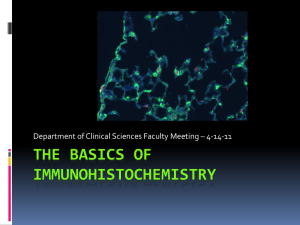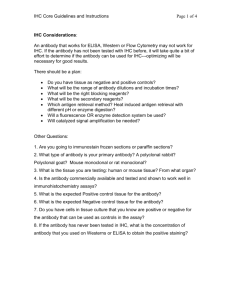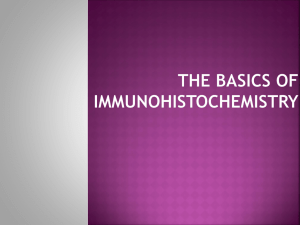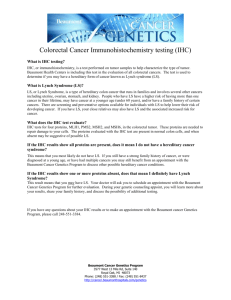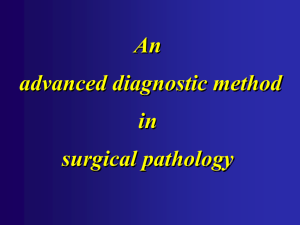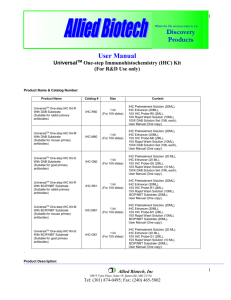how to test new antibodies for immunohistochemistry
advertisement
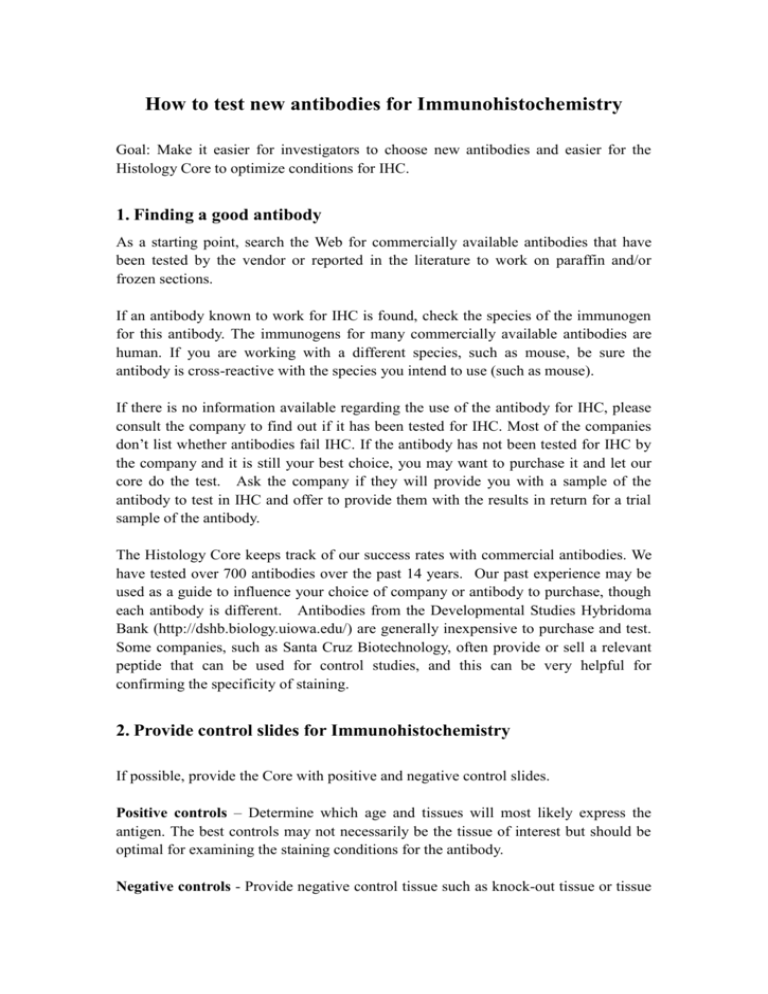
How to test new antibodies for Immunohistochemistry Goal: Make it easier for investigators to choose new antibodies and easier for the Histology Core to optimize conditions for IHC. 1. Finding a good antibody As a starting point, search the Web for commercially available antibodies that have been tested by the vendor or reported in the literature to work on paraffin and/or frozen sections. If an antibody known to work for IHC is found, check the species of the immunogen for this antibody. The immunogens for many commercially available antibodies are human. If you are working with a different species, such as mouse, be sure the antibody is cross-reactive with the species you intend to use (such as mouse). If there is no information available regarding the use of the antibody for IHC, please consult the company to find out if it has been tested for IHC. Most of the companies don’t list whether antibodies fail IHC. If the antibody has not been tested for IHC by the company and it is still your best choice, you may want to purchase it and let our core do the test. Ask the company if they will provide you with a sample of the antibody to test in IHC and offer to provide them with the results in return for a trial sample of the antibody. The Histology Core keeps track of our success rates with commercial antibodies. We have tested over 700 antibodies over the past 14 years. Our past experience may be used as a guide to influence your choice of company or antibody to purchase, though each antibody is different. Antibodies from the Developmental Studies Hybridoma Bank (http://dshb.biology.uiowa.edu/) are generally inexpensive to purchase and test. Some companies, such as Santa Cruz Biotechnology, often provide or sell a relevant peptide that can be used for control studies, and this can be very helpful for confirming the specificity of staining. 2. Provide control slides for Immunohistochemistry If possible, provide the Core with positive and negative control slides. Positive controls – Determine which age and tissues will most likely express the antigen. The best controls may not necessarily be the tissue of interest but should be optimal for examining the staining conditions for the antibody. Negative controls - Provide negative control tissue such as knock-out tissue or tissue which does not express the antigen. Consider purchasing a blocking peptide. 3. Try different pre-treatment and/or detection methods for each antibody The Histology Core will routinely test the following 2-3 different pre-treatment and 2-3 different detection methods to optimize the conditions for new antibodies. Please provide us with all possible antibody information and staining conditions from the company and from the literature. The Core will test and optimize these conditions for staining. We request that you submit at least 4 positive control slides for testing with a new antibody. More are better. Pretreatment: 1. No pretreatment 2. Heat antigen retrieval Most of Abs need heat antigen retrieval. The buffers with different pH will be used for testing. 3. Proteinase K or Trypsin Detection methods: 1. 2. 3. Indirect fluorescent staining: Alexa 488, Alexa 568 Amplified fluorescent staining: ImmPF or ImmP/Red HRP (horseradish peroxidase) staining: ImmPHRP or ABCHRP Generally on the first run of the IHC experiment, the Histology Core will test your IHC slides with no pretreatment and heat antigen retrieval (“PC/BE” on IHC form) at one detection method. After first run of the IHC we may do more testing to either change the pretreatment, concentration or the detection method. 4. What you should do after you get your slides After you received and looked your IHC slides you should update the IHC results on your IHC form and send it to the Histology Core director for record. To update your IHC result, you can match the label on top left of the slide with the “slides label 2” on the IHC form. You will know which condition is working for that Ab. You may request Histology Core to do more testing if the results are not optimal. We will be happy to review the slides with you if you make an appointment with the Core director.

